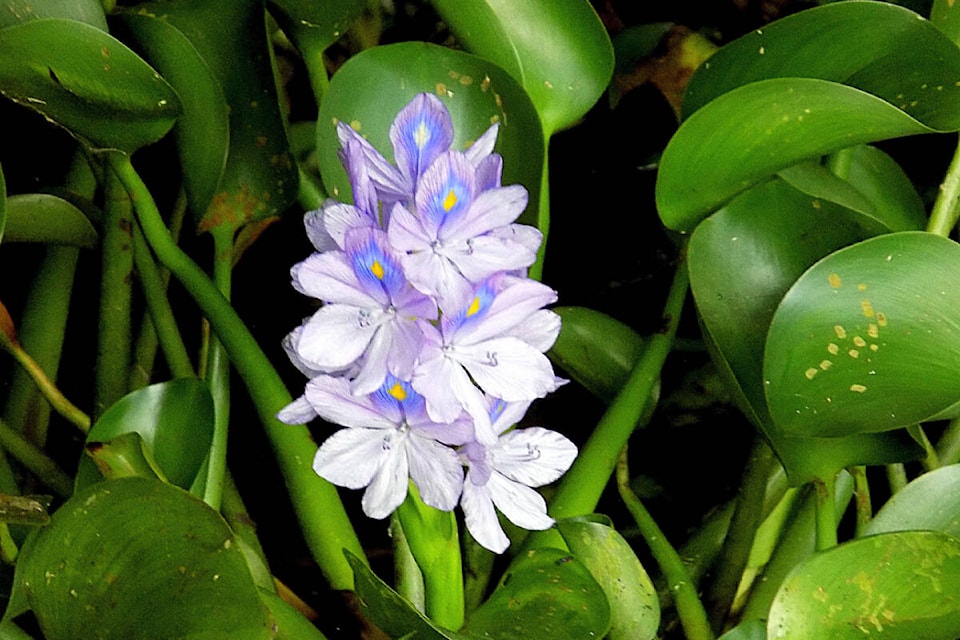By: David Clements/Special to Langley Advance Times
Someone once told me a big difference between northern Australia and here is that you can’t simply walk close to a body of water or take a swim in it without carefully checking for what may lie below the surface… especially crocodiles.
Here in coastal British Columbia, we never have to worry about crocodiles but there are still good reasons to check what’s in the water.
Invasive plants like water hyacinth, water lettuce, floating heart, parrot feather, water milfoil, and flowering rush may all find their way into our waterways largely unnoticed.
These invasive plants don’t have teeth, but do threaten to modify the environment drastically – often by forming dense, tangled monocultures.
I was surprised when my student Emma Nikkel took on water hyacinth as part of her project to predict what plants might flourish here with climate change.
Water hyacinth is seen as a tropical pest, infesting waterways in the southern United States, tropical Asia, Australia, and Africa – after branching out from its native habitat in South America.
In the 1980s, the water hyacinth “crocodile” quietly slunk into the world’s second largest freshwater lake, Lake Victoria which borders on Tanzania, Kenya, and Uganda.
Before long, water hyacinth was covering wide swaths of the lake, peaking at 174 square kilometres in 1998.
A weevil introduced to control the plant combined with stormy weather associated with El Nino in the late 1990s greatly reduced this infestation.
To this day, however, water hyacinth still covers more than 30 sqaure kilometres, threatening fisheries, drinking water quality, transportation, power generation, and many other economic and environmental aspects supporting 40 million people in the Lake Victoria basin.
Emma and I heard this tropical species had crept into a local body of water and had overwintered there in 2021, but when our research team went to examine the same body of water in 2022, it had failed to overwinter… so water hyacinth was stymied for now.
Our research is supported by Metro Vancouver and the Natural Sciences Research Council of Canada, and both our federal and local governments do not want such “crocodiles” around.
Water hyacinth is not really “gone” from the area, as I recently saw it being sold at a local nursery, marketed to gardeners who like its trademark purple flowers – its ticket to worldwide spread.
Selling it here is perfectly legal, but as the Invasive Species Council of BC recommends, there are other plants you should grow instead.
.
– David Clements PhD, is a professor of biology and environmental studies at Trinity Western University
PAST GREEN BEAT: The power of water
RECENT GREEN BEAT: Some hope for plastics in our future
OTHER GREEN BEAT: Hundreds of species spotted in Langley watersheds
.
.
Have a story tip? Email: news@langleyadvancetimes.com
Like us on Facebook and follow us on Twitter.
